The idea of creating a structure within Facebook to foster language learning stemmed from the huge popularity and ease of use of this platform. It is also a method to bi-pass the technological ineptness of Content Management Systems such as Blackboard TM; where using video media is often fraught with compatibility issues.
The idea had to bi-pass the usual Facebook accounts of students, and an environment created that was limited to expression in the target language.
-
Stage 1- creation of fictional account
This first step I took from watching a selection process in a Derren Brown show; where he asks participants to draw a very simple face. You do not have to explain that this is a Facebook project, and it might be better that they know as little as possible about it at first
You will ask students to open the Windows program called ‘Paint’ (a simple accessory for drawing on a computer included in Windows). Tell students to draw a simple face and give them a free choice of which gender it will belong to.I also asked them to change the hair and eye colour of their character, so that it is different from their own.
When they have done this ask them to save the image to the hard-drive of the computer, in a place they will remember.
Have them open a Word document, or better still, a ‘New Page’ in a Blackboard Wiki. Have them name the page or document with a target language name for their character; i.e. François Durand ( in French).
Next, the student follows the steps for inserting the image of their character into the document. Once this is done they give the character its date and place of birth ( I usually ask them to make their character between 5 and 30 years older than themselves)
Give the character a profession, marital status, town where they live, accomodation specifications, positive and negative personality traits and likes and dislikes. All these qualities are written down underneath the photo of the character.
The next step is to have students create a new account with a popular provider, such as Gmail or Yahoo ( they need an email account that is not associated with a Facebook account, and they cannot use School or University addresses since Facebook makes this difficult, for various reasons)
Now have the students create a new Facebook Page, using their new or existing email addresses, and have them fill-out their profile information using the photo and details of their imaginary character.
Have the students set the Facebook language to the target language (in the account settings).
Have the students add your own imaginary character’s Facebook page; thus providing a central point for them to friend each other.
-
Stage 2- projects within Facebook
From this point onwards your own activities can be created. This is just an example:
1. Activity 1. Description of a trip to the target country’s capital:
Tell your students to describe an imaginary trip to the target language country’s capital by using the video and photo embed features in Facebook.
example: Trip to Paris
1. Describe their journey (metro, train, car): find a YouTube or DailyMotion video ( or any video that shows on Facebook) of the method of transport they will use and share it on their wall. Add a description of the journey as the accompanying text to the video.
2. Meeting with friends: again choose a video of random people, preferably speaking the target language, on YouTube. Write a description of this encounter.
3. Lunch: again try to find a video of a restaurant in the capital and describe meal. If a video cannot be found an image found online can be saved, and uploaded to their Facebook comment.
4. Cultural event: Find a video of chosen museum, park, monument that the imaginary character + his friends from (2.) go to. Describe.
5. Night out: Find a video of club, cinema film, theater, cabaret, concert and describe.
6. Sum-up the trip to the capital in commentary.
Results of activity
The creation of this fictitious Facebook account and subsequent activities in the target language immerses the student/ pupil into the target language by using the moments most popular social network. The flexibility ans ease of use of Facebook is paramount in making this a fast and practical activity. By choosing videos in target language the students are further exposed to the target language’s culture and their commentaries on the events are a good written and aural comprehension element. Students will also interact with each other in the target language in an informal way, and so practice everyday language skills
Note: It is against Facebook policy to create fraudulent accounts of existing people, so please discourage students from using real celebrities’ or well-known peoples’ names. I would like to thank Mark Zuckerberg and Facebook in advance for providing a supple and dynamic medium for language learning activities.
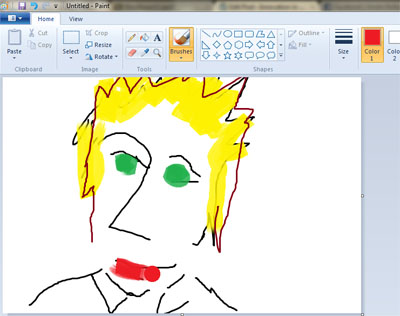
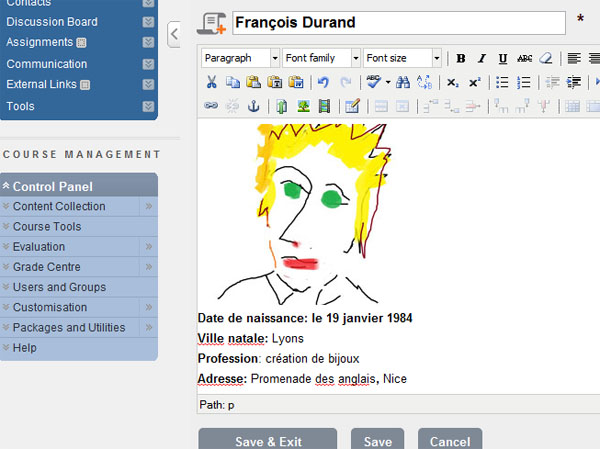
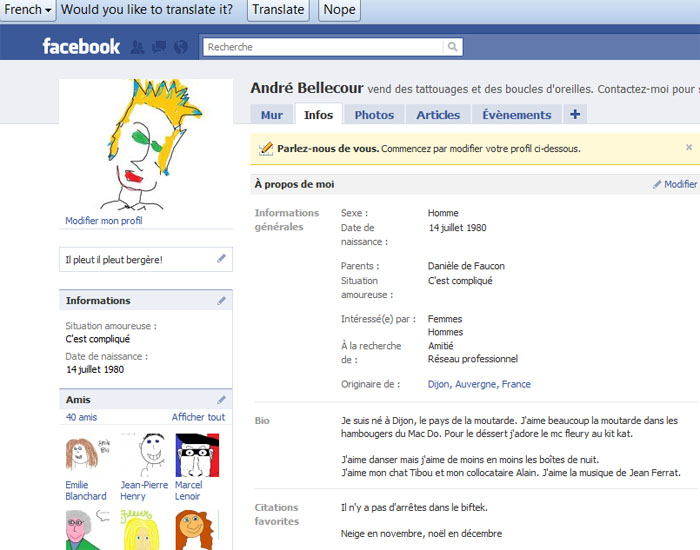
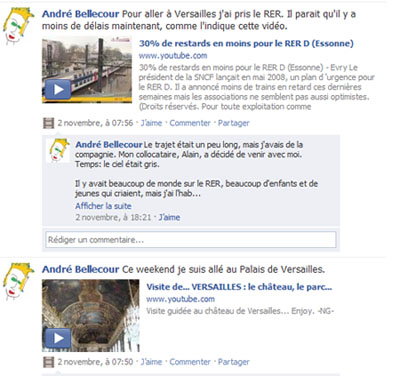
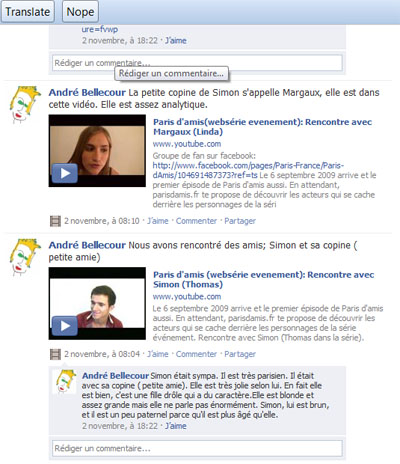
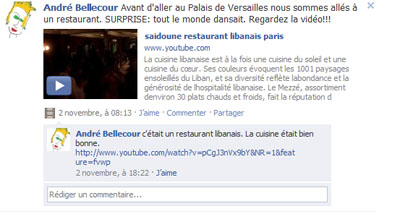

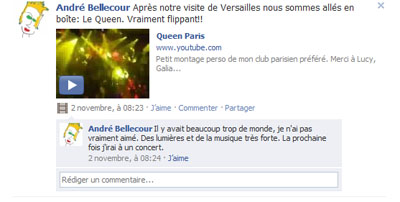

a creative and innovative method.
I like the idea. I am also into the use of media in the classroom for language learning purposes.
Excellent idea. I will try it next term with my students. Thank you.\